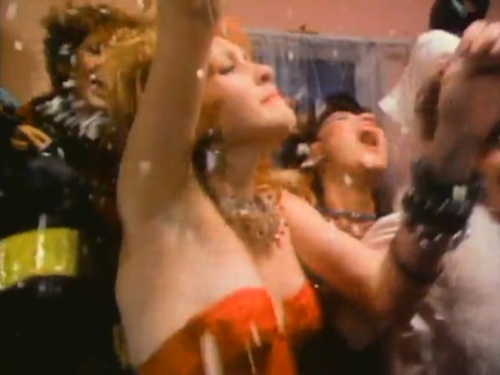Cyndi Lauper’s signature anthem Girls just want to have fun (1983) was a cover of Robert Hazard’s misogynistic original (1979); her own 1994 re-remake (Hey now) girls just want to have fun exploits and subverts mainstream categories of gender and sexuality.
For her 1994 version Lauper provocatively incorporated a gloss on another song, Redbone’s Come and get your love, and in the updated music video the original “girls” are replaced by men in drag while the singer arguably performs a drag version of herself (or rather, her 1980s persona of a girl who just wants to have fun).
Bringing nuance to the truism of Lauper as a creator of female address on MTV and in popular culture, her versions of the song demonstrate that agency and authority in popular music derive just as much (perhaps more) from interpretation and performance as they do from authorship and songwriting.
This according to “What fun? Whose fun? Cyndi Lauper (re)covers Girls just want to have fun” by Wayne Heisler , Jr. (ECHO: A music-centered journal VI/1 [2004]); RILM Abstracts of Music Literature 2004-6926).
Today is Lauper’s 70th birthday! Above, a still from the music video for her 1983 cover; below, the 1994 version.
BONUS: Live in 1987.













